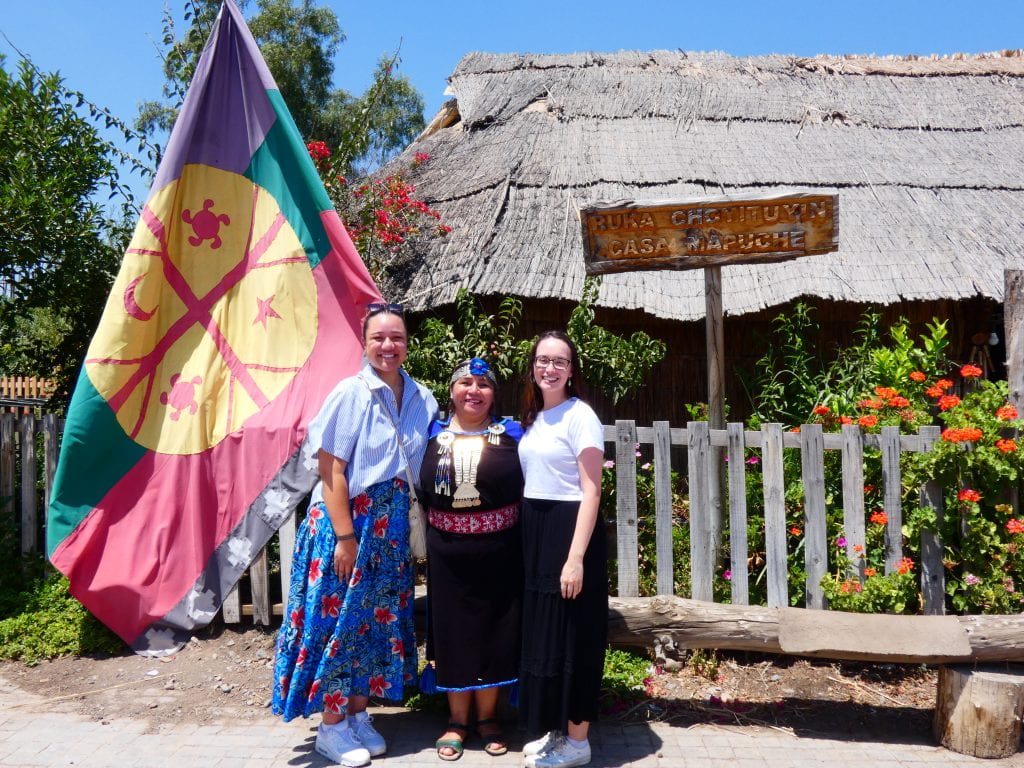Our third week in Santiago, Chile, began with an amazing set of lectures on Indigenous worldviews and healthcare. These lectures gave us an important overview of the historical and current contexts of the different indigenous groups in Chile, mainly focusing on the two largest groups, the Mapuche and Aymara peoples. On Tuesday, we visited the Museum of Memory and Human Rights, which was a very sobering and meaningful opportunity to learn more about the military dictatorship that has played a significant role in shaping Chilean society. As difficult as it is to hear about and imagine what people went through, it is so crucial so that these events are never forgotten, ignored, or denied, and to learn from the past to inform how people are now and in the future.




On Wednesday, we had a seminar on Indigenous public health policy and the history and evolution of indigenous laws and policies in Chile. The class evoked important reflections on how changes in governments, funding, shifts in societal awareness and interest, and general changes in the sociocultural, political, economic, and environmental contexts impact the progression of indigenous rights, recognition, and re-empowerment in Chile as it does in all other countries. The lecture emphasised the importance of continuing to promote and advocate indigenous issues especially relating to public health.
On Thursday, our much-anticipated field observation at the Ruka en Macul Choyituyiñ Warria Meu, where we learned about the beliefs, customs, traditions, instruments, clothing, and worldviews of the Mapuche people. It was really interesting to compare and contrast with Māori customs, such as there not being any traditional tattoos. Instead, the Mapuche express their ancestry and family through their jewellery, which I found extremely interesting to hear how different parts of a neckpiece and pin signifies the person’s children, parents, and partner. We were also given Sopapillas and Mate, which were both very yummy!

Following the field visit, we were invited by the New Zealand Embassy to attend a meeting with members of a team from the Ministry of Health focusing on indigenous and migrant public health policy. It was a wonderful experience to take part in an active exchange of knowledge, discussions, and ideas, and having the opportunity to share the different issues, processes, and structures in Aotearoa and how they may be similar or different to those in Chile.
On Friday, we had another incredible honour of meeting a Machi, who is the Mapuche healer! Some interesting takeaways include the worldview of masculine and feminine and that sex and gender are not connected, which I found to be very interesting especially with ongoing debates around sex, gender, and sexual orientation globally. It was amazing to hear about the worldviews, language, customs, beliefs, and traditions from a Machi and how he carries out his traditional healthcare practices. Following this incredible experience, we went with the Ministry of Health team we met the day before and members of the NZ Embassy to a municipal health team in La Pintana, where we learned about what the indigenous organisations do, what services they offer, and the challenges they have faced and currently experience. We visited one of their community Rukas and met another Machi, who gave us a final message that Mapuche people are strong and resilient, and the importance of these experiences in learning about the culture and to carry this knowledge on when we return to Aotearoa, to help revitalise, re-empower, respect, and carry on the practices and culture of indigenous people in Chile.


On Saturday, I decided to go to Villa Grimaldi, which is a memorial and former torture and detention centre used during the military dictatorship. It was another sobering but important experience to really understand what people went through during that time.


After this, I went to a Mapuche restaurant which has been on my list of things to do since we arrived! I ordered Pulmay, which is a mix of seafood, meats, and some carbs, prepared in a similar way as a hāngī in Aotearoa, which I just had to try. It was so delicious! Hands down the best food I’ve had so far in Chile! To end my week, I went to Cajon del Maipo to the Embalse el Yeso reservoir in the Andes Mountains. The view was incredible! I even dipped my legs in the cool lake, which was a very refreshing change from the hot weather in the Santiago metropolitan region. The magnificent and vast splendour of the Andes Mountains is so beautiful!


